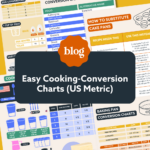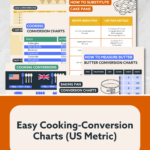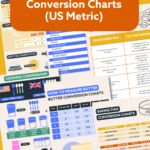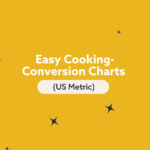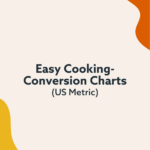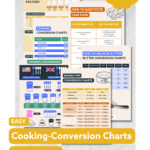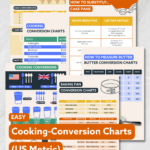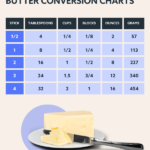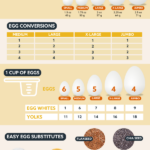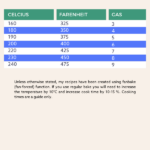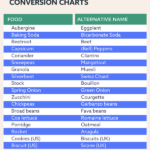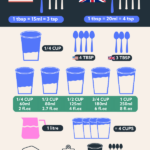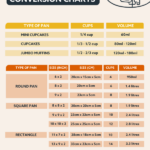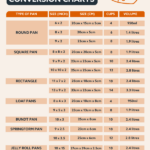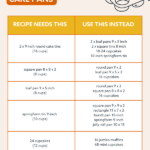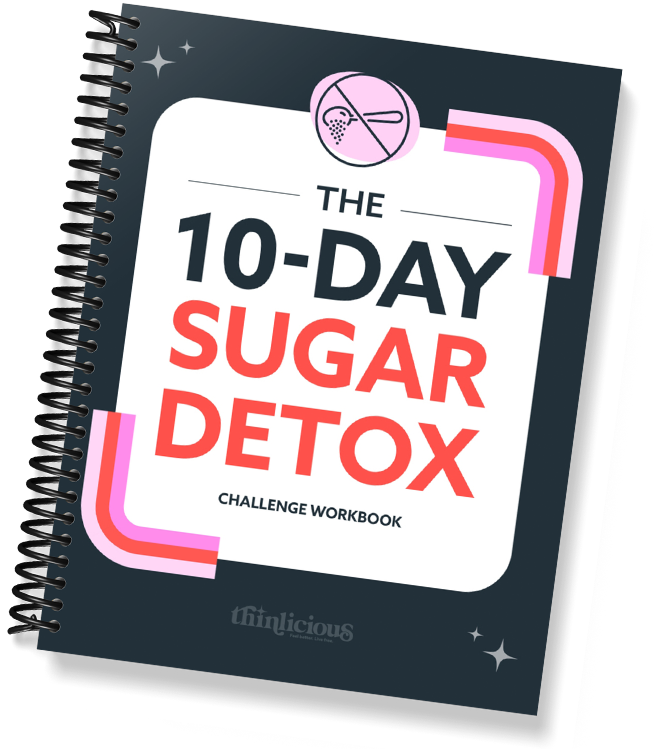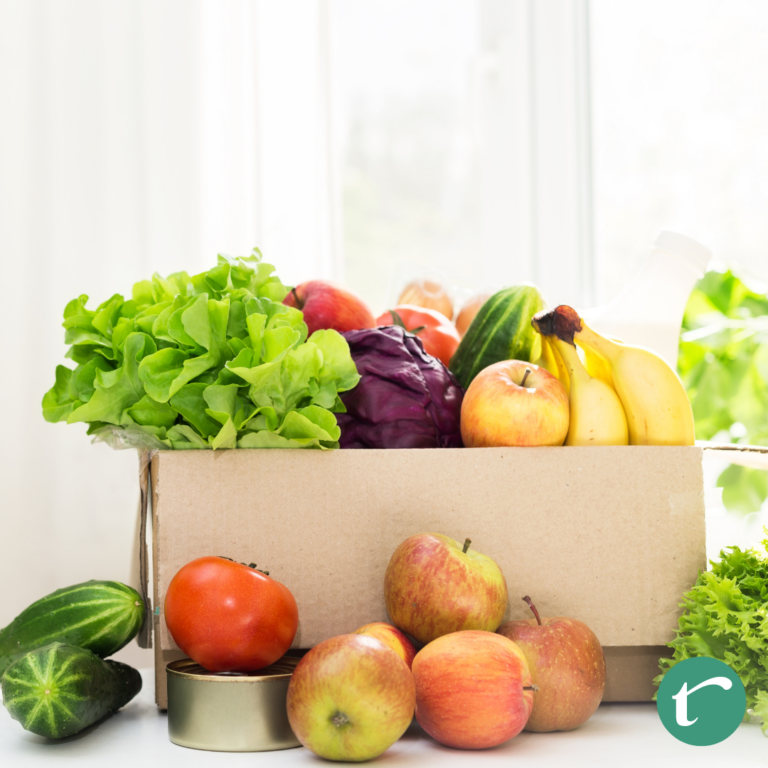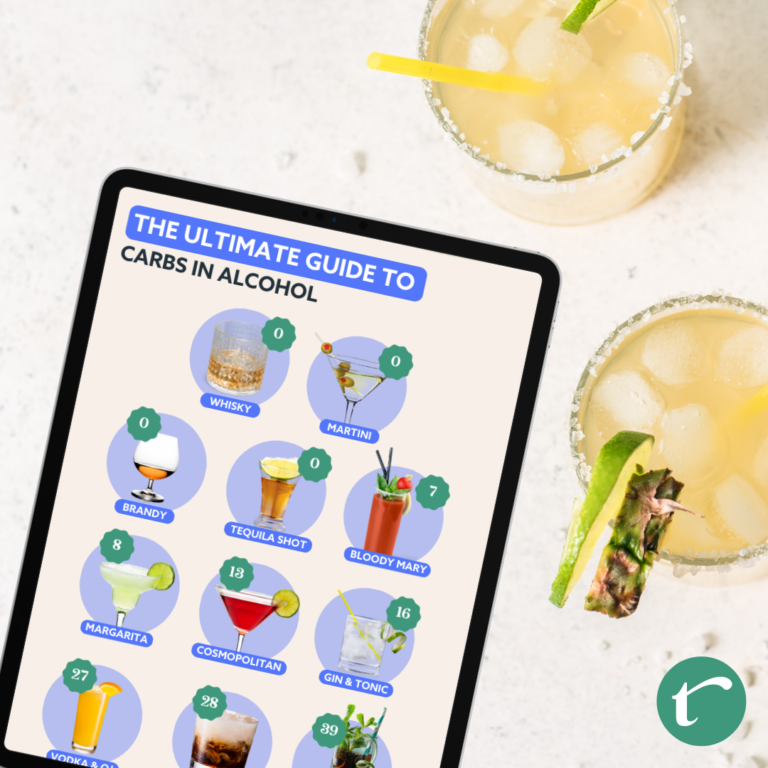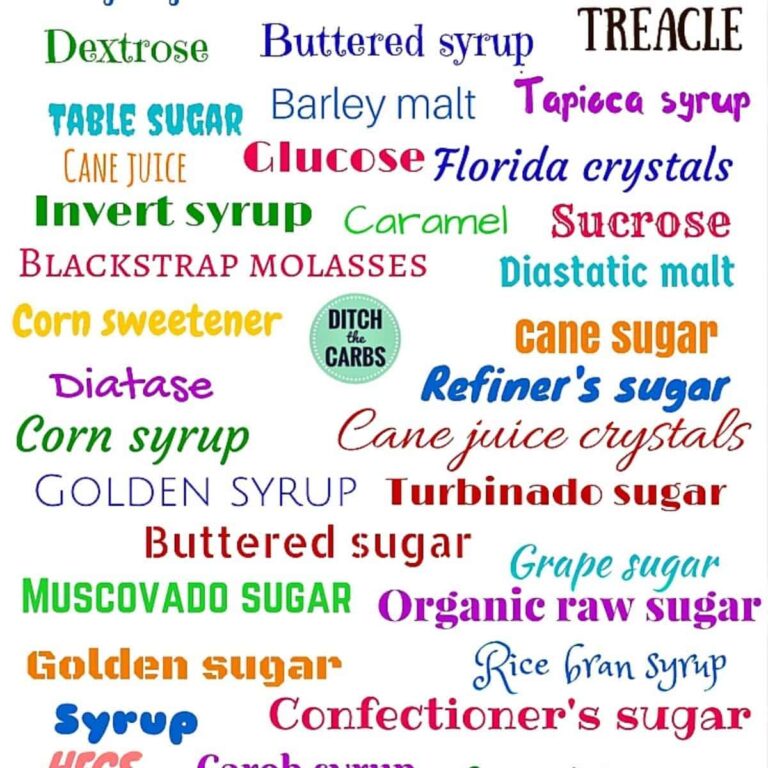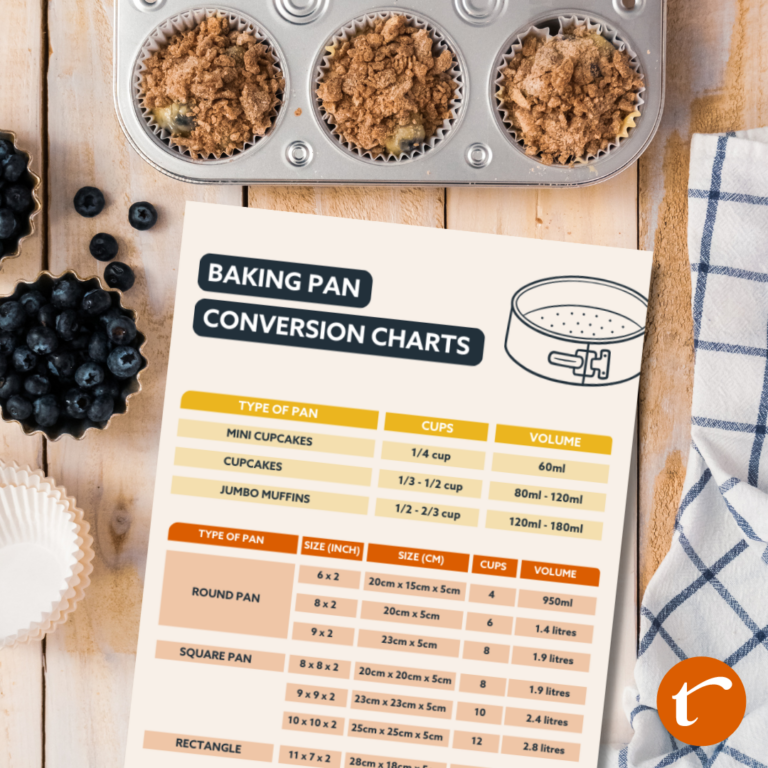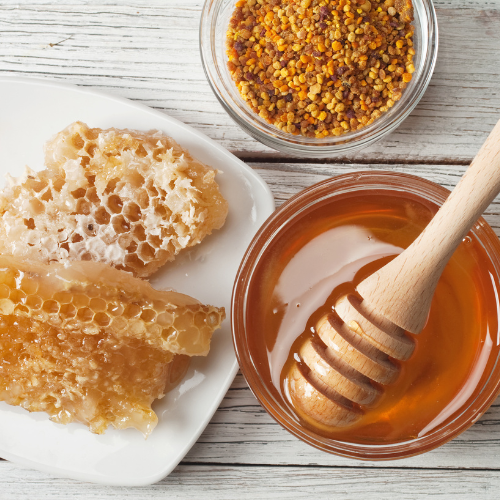Successful baking requires accurate cooking measurements, cooking equivalents, and cooking conversions between metric, imperial, and US cup measures.
Plus I’ve got FREE Kitchen Conversion Charts for you to make it all simple.
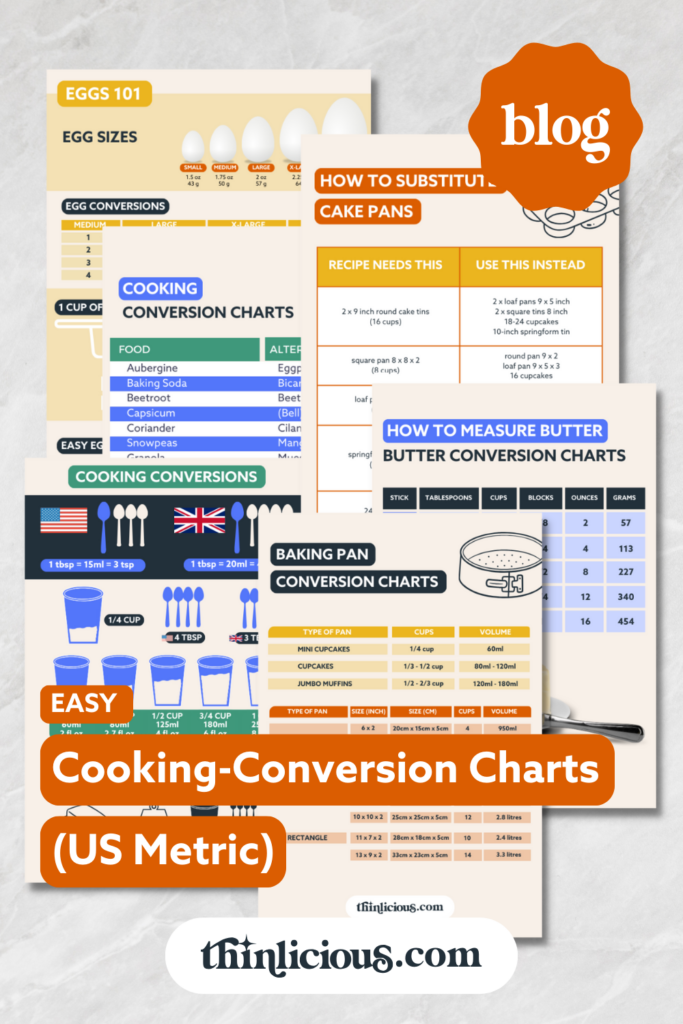
You may be confused with cooking conversions, temperature conversions, cups, ounces grams, liters, and pints.
Even the names of food change depending on where you are in the world.
What this website uses
These cooking conversion charts are a handy kitchen reference guide. Ditch The Carbs is an international website, so the cooking measurements are a useful tool to convert weight, volume, temperatures, and even ingredient names.
Are you ready to lose weight and heal your body for life (without dieting, drugs, or making yourself miserable)?

Our free on-demand video training will walk you through how to make this THE year you set health goals…and keep them.
Unless otherwise stated, I use a Standard US Cup which is 240ml, 5ml teaspoon (tsp), and a 15ml tablespoon (tbsp). The chart below shows the conversion from cups, ml, fl. oz, tsp, and tbsp.
The standard metric cup is 250ml, often used in NZ, UK, and CA. But who/where each cup is used is being muddied now with shops importing measuring cups from suppliers around the world.
Measuring cups, tbsp, and tsp
The most common kitchen measuring tools are teaspoons, tablespoons, and cups. It’s important that you know what sizes you have and what sizes a recipe uses. Knowing how many ml are in a cup and how many ml are in a tablespoon is imperative.
- A standard tablespoon is 15ml which is 3 teaspoons.
- A standard Australian tablespoon is 20ml, which is 4 teaspoons.
US cups to ounces and grams (baking ingredients and dairy)
These cooking conversion charts make it easy to convert US cups to ounces and grams.
All cooking ingredient conversion charts are as accurate as possible and most recipes on Ditch The Carbs have already been converted for you.
Cooking ingredients conversion charts – US cups to ounces and grams
Now you can easily find how many grams are in a cup of almond flour or how many cups is 50g of cocoa powder.
| Ingredient | Cup | Grams | Ounces |
|---|---|---|---|
| Almond flour | 1/4 cup | 25 g | 0.9 oz |
| 1/2 cup | 50 g | 1.8 oz | |
| 1 cup | 100 | 3.5 oz | |
| Chocolate chips | 1/4 cup | 35 g | 1.2 oz |
| 1/2 cup | 70 g | 2.5 oz | |
| 1 cup | 140 g | 4.9 oz | |
| Cocoa powder | 1/4 cup | 25 g | 0.9 oz |
| 1/2 cup | 50 g | 1.8 oz | |
| 1 cup | 100 g | 3.5 oz | |
| Coconut (shredded) | 1/4 cup | 25g | 0.9 oz |
| 1/2 cup | 45g | 1.6 oz | |
| 1 cup | 90g | 3.2 oz | |
| Coconut flour | 1/4 cup | 25 g | 0.9 oz |
| 1/2 cup | 50 g | 1.8 oz | |
| 1 cup | 100 g | 3.5 oz | |
| Peanut butter | 1/4 cup | 65 g | 2.3 oz |
| 1/2 cup | 125 g | 4.4 oz | |
| 1 cup | 250 g | 8.8 oz | |
| Sweetener | 1/4 cup | 30 g | 1 oz |
| 1/2 cup | 50 g | 1.8 oz | |
| 1 cup | 100 g | 3.5 oz |
Dairy conversion charts – US cups to ounces and grams
How do you measure butter or cheese? Both butter and cheese are easiest to measure by weight (using grams or ounces) but some people prefer to use a cup to measure shredded cheese and in the US, you can measure butter by using sticks of butter that are pre-wrapped and pre-measured portions of butter.
- 1/2 stick butter = 1/4 cup = 47 g = 1.6 oz
- 1 stick of butter = 1/2 cup = 113 g = 4 oz
| Ingredient | Cup | Grams | Ounces |
|---|---|---|---|
| Butter | 1/4 cup | 47 g | 1.6 oz |
| (1 stick of butter) | 1/2 cup | 113 g | 4 oz |
| 1 cup | 225 g | 7.9 oz | |
| Cheese, shredded | 1/4 cup | 35 g | 1.2 oz |
| 1/2 cup | 70 g | 2.5 oz | |
| 1 cup | 140 g | 4.9 oz | |
| Cream cheese | 1/4 cup | 30 g | 1 oz |
| 1/2 cup | 60 g | 2.1 oz | |
| 1 cup | 120 g | 4.2 oz |
How to measure butter
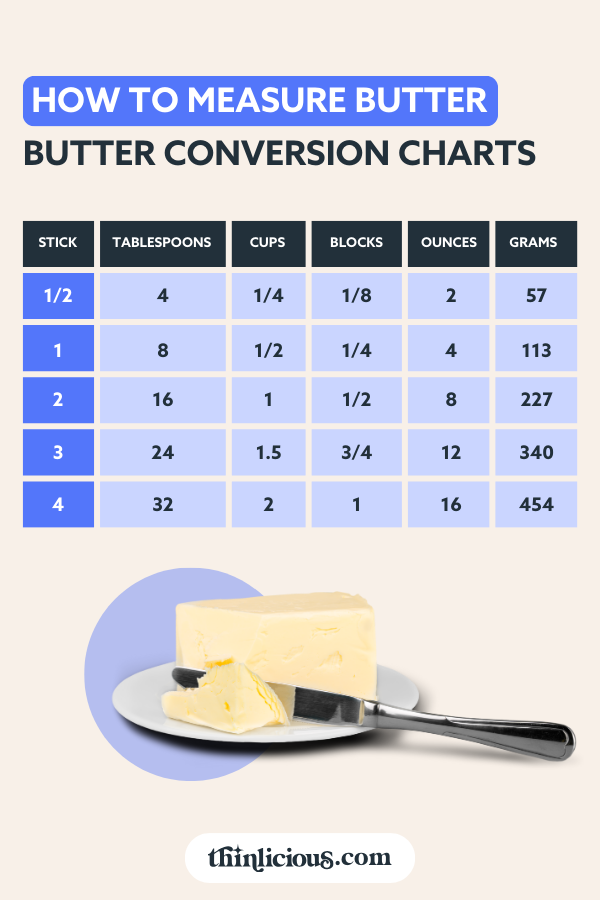
How to measure butter using cups, sticks, grams, and ounces is one of the most common baking questions I am asked.
Butter is easiest to measure by weight (using grams or ounces) but some people prefer to measure sticks of butter (that are pre-wrapped and pre-measured portions of butter) or with a tablespoon.
| Stick | Tbsp | Cups | Ounces | Grams |
|---|---|---|---|---|
| 1/2 stick | 4 tbsp | 1/4 cup | 2 oz | 57 g |
| 1 stick | 8 tbsp | 1/2 cup | 4 oz | 113 g |
| 2 stick | 16 tbsp | 1 cup | 8 oz | 227 g |
| 3 sticks | 24 tbsp | 1.5 cups | 12 oz | 340 g |
How to convert egg sizes
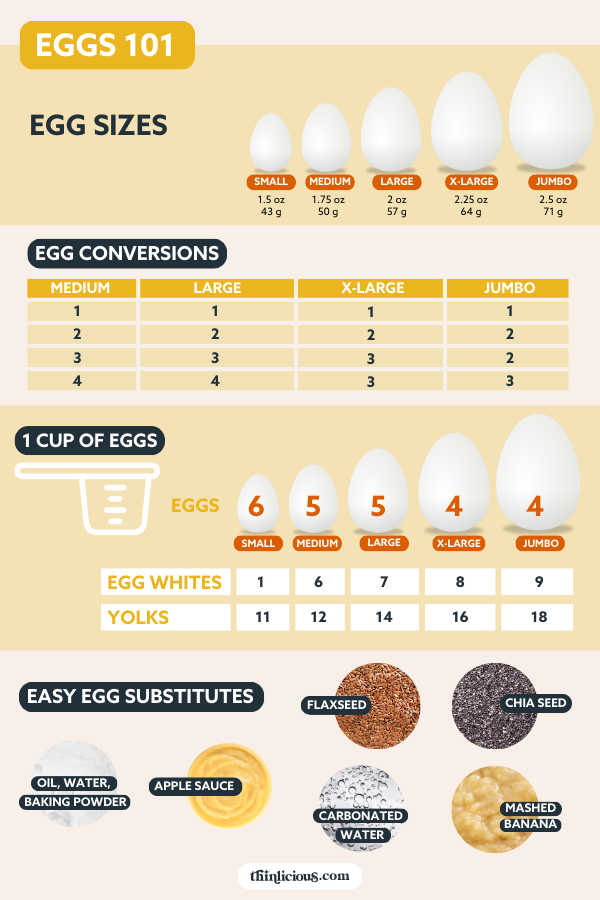
It is important to know how to use the correct quantity or correct egg size in a recipe. Does the recipe call for medium or large eggs? Does the recipe call for liquid egg measurements? You can see all the handy egg conversion charts and the BEST 8 egg substitutes.
Baking pan conversions
How do you convert baking pans? These conversion charts will show you how much each cake tin will hold. You may need to adjust baking times according to the size and depth of your baking pan.
| Type of pan | Size (inch) | Size (cm) | Cups | Volume |
|---|---|---|---|---|
| Round pan | 6 x 2 | 15cm x 5cm | 4 cups | 950ml |
| 8 x 2 | 20cm x 5cm | 6 cups | 1.4 litres | |
| 9 x 2 | 23cm x 5cm | 8 cups | 1.9 litres | |
| Square pan | 8 x 8 x 2 | 20 x 20 x 5 | 8 cups | 1.9 litres |
| 9 x 8 x 2 | 23 x 23 x 5 | 10 cups | 2.4 litres | |
| 10 x 8 x 2 | 25 x 25 x 5 | 12 cups | 2.8 litres | |
| Rectangle | 11 x 7 x 2 | 28 x 18 x 5 | 6 cups | 1.4 litres |
| 13 x 9 x 2 | 33 x 25 x 5 | 14 cups | 3.3 litres |
Cooking conversion charts (printable)
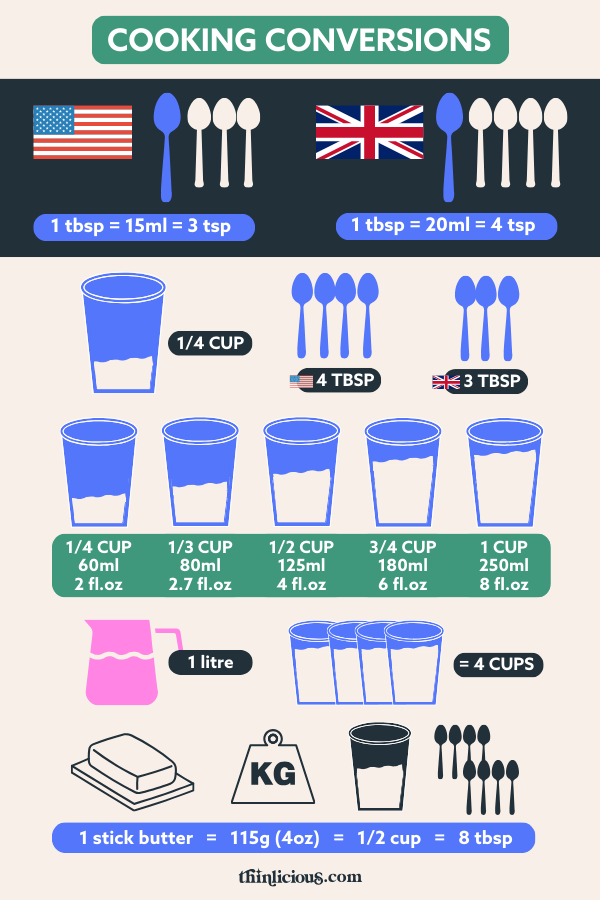
International food names
It can be confusing to understand the names of food and the names of ingredients from around the world. These foon names, ingredient names, and alternative international names will help your baking success.
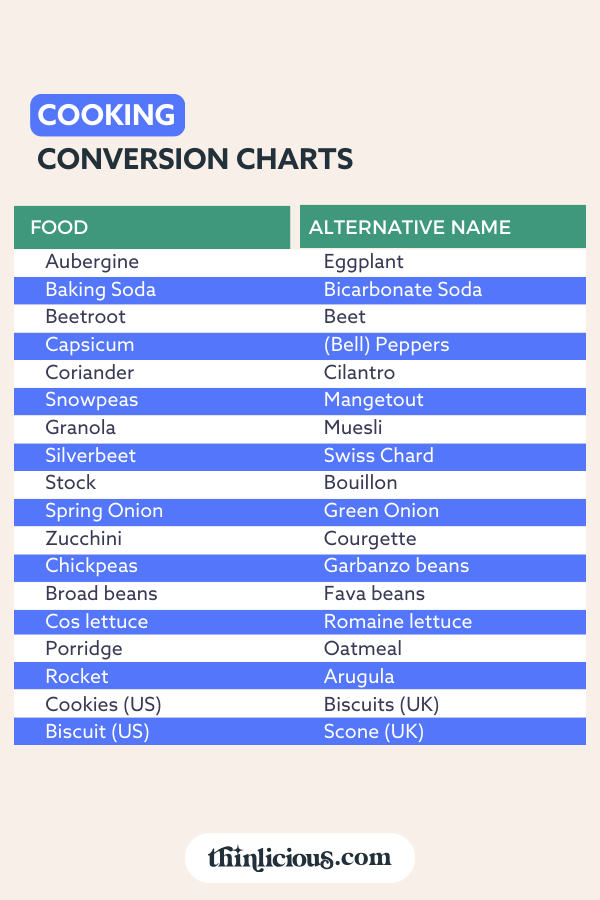
Cooking temperature conversions
Unless otherwise stated, my recipes have been created using fan bake (fan-forced) function. If you use regular bake you will need to increase the temperature by 10°C and increase cook time by 10-15 %. Cooking times are a guide only.
| Celcius | Fahrenheit |
|---|---|
| 140 C | 275 F |
| 160 C | 320 F |
| 180 C | 350 F |
| 200 C | 400 F |
| 220 C | 425 F |
| 240 C | 475 F |
Cooking by weight or volume?
There is an eternal debate over the question is it better to cook by weight or by volume? I tend to use cook by weight because it is more accurate, but I also cook using measuring cups when recipes do not need to be very accurate or there is a large tolerance within the recipe.
Cooking by weight
ADVANTAGES:
- It’s accurate
- It’s easy to add each ingredient then “tare” or “zero” the electronic scales
- You create less washing up as you use fewer measuring cups and spoons.
Cooking by cups
ADVANTAGES:
- Quick and easy to scoop and measure.
DISADVANTAGES:
- Inaccurate.
- The measured ingredient may be more or less depending on how firmly you pack the cup or how loosely you scoop the ingredients.
Measurement abbreviations
Standard/Imperial Measurement Abbreviations
tbsp = tablespoon (also TB, Tbl)
tsp = teaspoon
oz = ounce
fl. Oz = fluid ounce
c = cup
qt = quart
pt = pint
gal = gallon
lb = pound
Metric Measurement Abbreviations
ml = milliliter
g = grams
kg = kilogram
L = litre
Liquid Measurements Conversion Chart
8 fluid ounces = 1 cup = ½ pint = ¼ quart
16 fluid ounces = 2 cups = 1 pint = ½ quart
32 fluid ounces = 4 cups = 2 pints = 1 quart = ¼ gallon
128 fluid ounces = 16 cups = 8 pints = 4 quarts = 1 gallon
Butter
1 cup butter = 2 sticks = 8 ounces = 230 grams = 8 tablespoons
US to Metric Cooking Conversions
Liquids
⅕ tsp = 1 ml
1 tsp = 5 ml
1 tbsp = 15 ml
1 fl ounce = 30 ml
1 cup = 237 ml
1 pint (2 cups) = 473 ml
1 quart (4 cups) = .95 liter
1 gallon (16 cups) = 3.8 liters
1 oz = 28 grams
1 pound = 454 grams
Weight
1 gram = .035 ounces
100 grams = 3.5 ounces
500 grams = 1.1 pounds
1 kilogram = 35 ounces
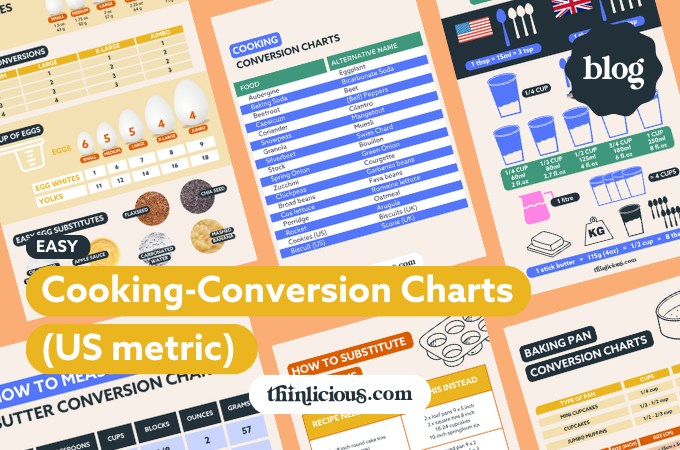
What if you could actually take control of
your health in just 10 days?
It’s not your fault you can’t lose weight as a woman over 40 even though you’ve likely tried literally everything. Your metabolism probably feels broken and your hormones are likely all out of whack.
But you can fix it all with ONE simple change: eliminate sugar. We make it super easy with daily lessons teaching you the science behind what makes us gain weight in our midlife and beyond! Are you ready to get started now?

